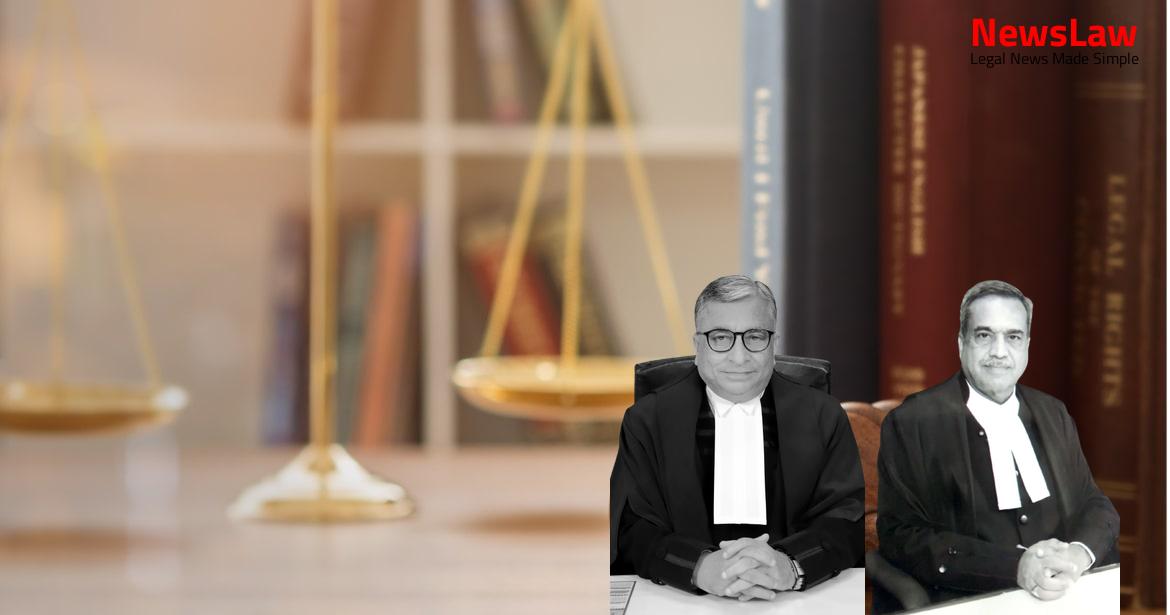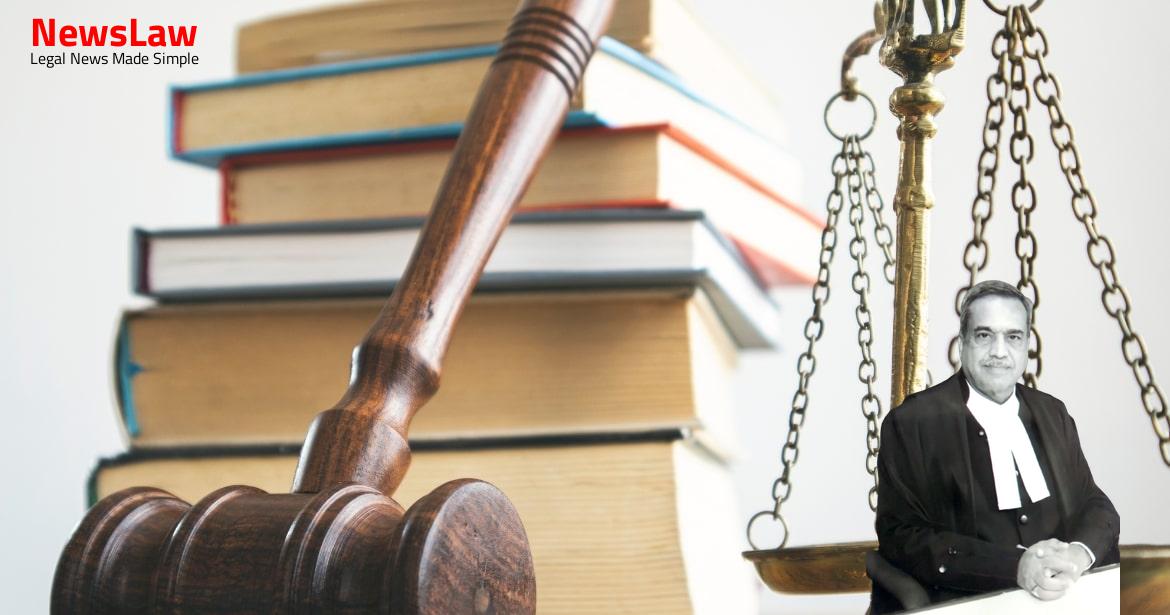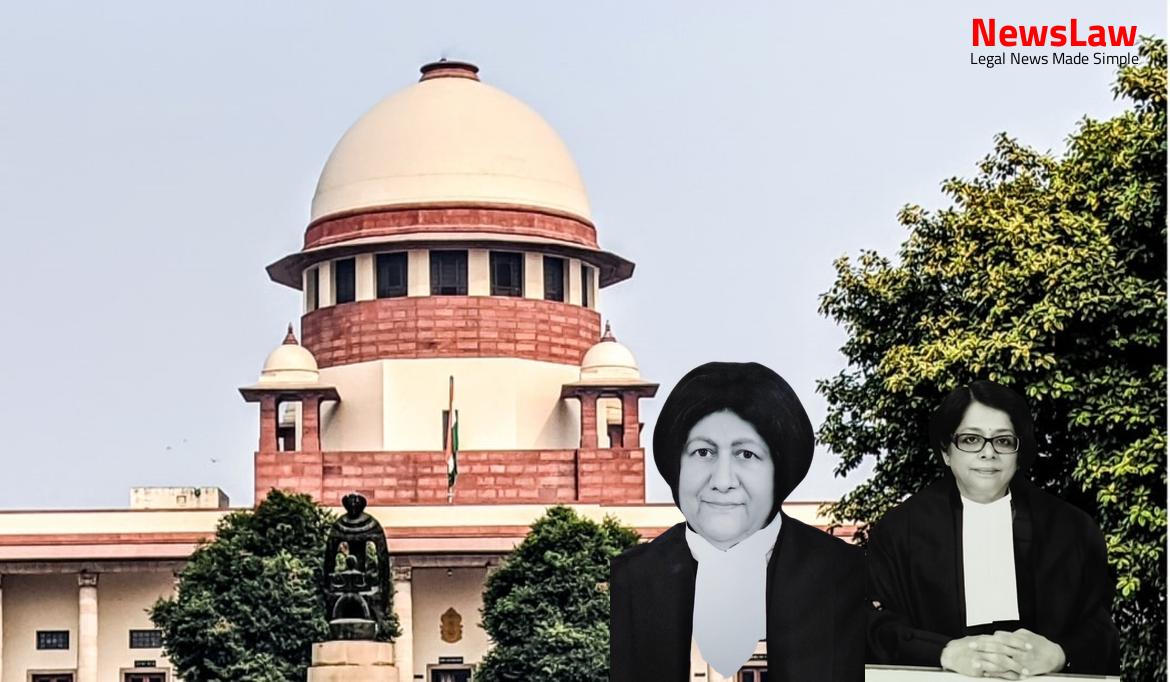Explore a detailed legal examination of a case centered around circumstantial evidence. The Court’s in-depth analysis of the evidence and application of legal principles sheds light on the complexities of proving guilt in such cases. Dive into the nuances of legal reasoning and judgment in handling cases based on circumstantial evidence.
Facts
- The High Court dismissed the appeals filed by the appellants and confirmed the conviction under Section 302 IPC.
- The complaint was lodged by the brother of the deceased, accusing the appellants of killing his brother.
- The appeals were filed by the accused against the judgment and order of conviction by the Trial Court.
- The High Court relied on the depositions of witnesses, including the daughter of the deceased and the accused, to uphold the conviction.
- The judgment and order of the Trial Court sentencing the accused to life imprisonment and a fine of Rs. 20,000 were affirmed by the High Court.
- Accused Suman Devi was alleged to have illicit relations with co-accused Raju @ Rajendra Prasad.
- Dispute and differences led accused Suman Devi to reside in her paternal house.
- Deceased brother went to in-law’s house to bring back his wife and children, but was later found hanging from a tree, allegedly murdered by Suman Devi, father-in-law, mother-in-law, brother-in-law, and Raju.
- Charge sheet filed against the accused.
- Charge framed under Section 302 IPC or in the alternative under Section 302/34 IPC.
- Accused did not plead guilty and stood trial.
- 15 witnesses including PW-6 and PW-7 were examined by the prosecution.
- Differences between deceased brother and his wife mentioned.
- The original accused filed the present appeals.
- Accused statements under Section 313 Cr.P.C. recorded after prosecution evidences.
Also Read: Challenging Legal Presumptions in Negotiable Instrument Cases
Arguments
- The prosecution has failed to establish the complete chain of events.
- PW-6 and the accused Suman Devi, considered as ‘star witnesses’, have not seen the appellants killing the father.
- No evidence to prove that the appellants were last seen with the deceased.
- Lack of evidence linking the appellants to the murder of the deceased.
- Case is based on circumstantial evidence.
- Both the Trial Court and the High Court made a serious error in holding the appellants guilty under Section 302/34 IPC.
- Learned counsel for the accused relied on the cases of Mohd. Younus Ali Tarafdar Vs. State of West Bengal and Anwar Ali Vs. State of Himachal Pradesh to argue against the conviction based on circumstantial evidence.
- Opposing the appeals, the State argued that the evidence presented established the motive and circumstances leading to the conclusion that the accused committed the murder.
- The prosecution proved the existence of disputes between the deceased and the accused, as well as threats given by the accused to the deceased.
- Both the Trial Court and the High Court were correct in convicting the accused under Section 302/34 IPC based on the established motive and circumstances.
- The postmortem report supported the conclusion that the deceased was murdered.
Also Read: Legal Analysis of Admission Irregularities in Educational Institutions
Analysis
- The case is based on circumstantial evidence.
- The prosecution failed to prove the guilt and complete chain of events.
- There is no direct evidence linking the accused to the murder.
- The witness statements do not establish that the accused were last seen with the deceased.
- The importance of considering the cumulative effect of all proved facts in establishing guilt.
- The necessity for the evidence to be consistent only with the guilt of the accused.
- The prosecution does not need to exclude every hypothesis suggested by the accused.
- The chain of evidence must be complete to leave no reasonable ground for innocence.
- Lack of evidence on what happened after the deceased went to the room and slept.
- Absence of evidence of anyone beating the deceased.
- In cases where evidence is of a circumstantial nature, the circumstances from which the conclusion of guilt is to be drawn should be fully established.
- Each fact sought to be relied upon must be proved individually and should exclude every possible hypothesis except the one to be proved.
- The court must consider the common course of natural events and human conduct in drawing inferences.
- The doctrine of benefit of doubt applies in dealing with the aspect of proof of primary facts.
- The circumstantial evidence must form a chain so complete that there is no escape from the conclusion of the accused’s guilt.
- The evidence must be complete and incapable of being explained by any other hypothesis than the guilt of the accused.
- The conviction of the appellants for the offence under Section 302/34 IPC is not sustainable.
- The Trial Court and the High Court made a serious error in convicting the appellants based on circumstantial evidence.
- The law laid down by the Court on circumstantial evidence was not applied correctly in this case.
Also Read: Quashing of Enhanced Tuition Fee in Private Medical Colleges
Decision
- The appellants accused to be released forthwith if not required in any other case.
- Both appeals are allowed, and the judgment and order of conviction are quashed and set aside.
- The accused are acquitted for the offence they were convicted of under Section 302/34 IPC.
Case Title: RAJU @ RAJENDRA PRASAD Vs. THE STATE OF RAJASTHAN (2022 INSC 983)
Case Number: Crl.A. No.-001559-001559 / 2022



